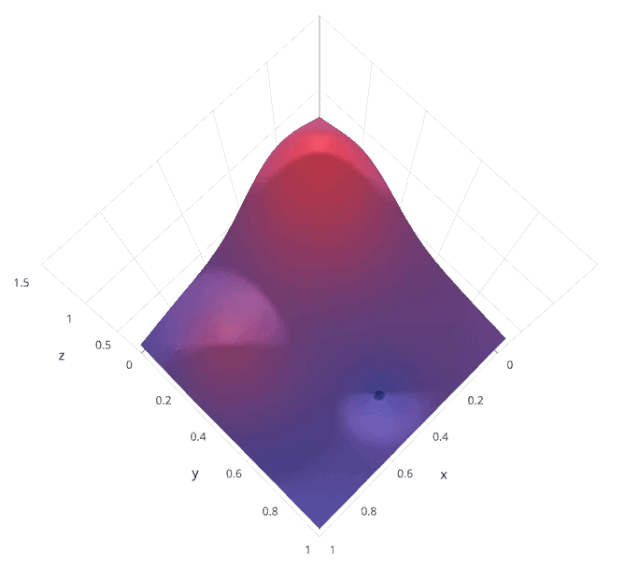
我们提供安全,免费的手游软件下载!

大侠幸会,在下全网同名「算法金」 0 基础转 AI 上岸,多个算法赛 Top 「日更万日,让更多人享受智能乐趣」
为模型找到最好的超参数是机器学习实践中最困难的部分之一
机器学习模型中的参数通常分为两类:模型参数和超参数。模型参数是模型通过训练数据自动学习得来的,而超参数则是在训练过程开始前需要人为设置的参数。理解这两者的区别是进行有效模型调优的基础。
1.1 超参数与模型参数的区别
模型参数是在模型训练过程中通过优化算法学习得来的。例如,线性回归中的权重系数、神经网络中的权重和偏置都是模型参数。这些参数直接影响模型的预测能力,是模型从数据中提取到的信息。
超参数则是由用户在训练模型之前手动设定的参数,不能通过数据自动学习得来。例如,决策树的最大深度、支持向量机的核函数类型、神经网络的学习率和隐藏层数量等都是超参数。超参数的选择直接影响模型的性能和训练效率,因此需要进行仔细调优。
1.2 为什么超参数调优很重要
超参数调优的目的是找到最优的超参数组合,使模型在验证集上的表现最佳。合适的超参数能显著提升模型的性能,而不合适的超参数则可能导致模型的欠拟合或过拟合。
例如,在神经网络中,过高的学习率可能导致模型参数在训练过程中剧烈波动,无法收敛到一个稳定的值;过低的学习率则可能使模型收敛速度过慢,训练时间过长。同样,决策树中过大的树深度可能导致模型过拟合,过小的树深度则可能导致欠拟合。
超参数调优需要结合具体的问题、数据集和模型类型进行选择,通常包括以下几个步骤:
通过这些步骤,可以有效地提升模型的性能,使其在新数据上的预测更准确。
2.1 基本原理
网格搜索是一种系统的超参数调优方法,通过穷举搜索预定义的超参数空间,找到最佳的超参数组合。具体来说,网格搜索会列出所有可能的超参数组合,然后对每个组合进行模型训练和评估,最后选择在验证集上表现最好的组合。
假设我们有两个超参数 ? 和 ?,每个超参数都有三个可能的取值。网格搜索会尝试所有可能的 (?,?) 组合
通过这种方法,可以保证找到在给定超参数空间内的最优组合。

by Lavanya Gupta
2.2 优缺点分析
优点:
缺点:
2.3 实践示例
以下是一个使用 Python 和 scikit-learn 库进行网格搜索的示例代码:
from sklearn.model_selection import GridSearchCV
from sklearn.ensemble import RandomForestClassifier
# 定义模型和参数空间
model = RandomForestClassifier()
param_grid = {
'n_estimators': [10, 50, 100],
'max_depth': [None, 10, 20],
'min_samples_split': [2, 5, 10]
}
# 进行网格搜索
grid_search = GridSearchCV(estimator=model, param_grid=param_grid, cv=5, scoring='accuracy')
grid_search.fit(X_train, y_train)
# 输出最佳参数和得分
print("Best parameters found: ", grid_search.best_params_)
print("Best cross-validation score: ", grid_search.best_score_)
在这个示例中,我们对随机森林模型的三个超参数进行了网格搜索,找到了在验证集上表现最好的超参数组合。通过这种方法,我们可以显著提升模型的性能。
3.1 基本原理
随机搜索是一种超参数调优方法,通过在预定义的超参数空间内随机采样多个超参数组合,对每个组合进行模型训练和评估,找到表现最佳的超参数组合。与网格搜索不同,随机搜索不是穷举所有可能的组合,而是随机选择一部分组合进行评估。
假设我们有两个超参数 ? 和 ?,每个超参数都有多个可能的取值。随机搜索会在这些取值中随机采样若干个 (?,?) 组合,评估每个组合的模型性能,然后选择最优的组合。

3.2 优缺点分析
优点:
缺点:
3.3 实践示例
以下是一个使用 Python 和 scikit-learn 库进行随机搜索的示例代码:
from sklearn.model_selection import RandomizedSearchCV
from sklearn.ensemble import RandomForestClassifier
from scipy.stats import randint
# 定义模型和参数空间
model = RandomForestClassifier()
param_dist = {
'n_estimators': randint(10, 100),
'max_depth': [None, 10, 20],
'min_samples_split': randint(2, 11)
}
# 进行随机搜索
random_search = RandomizedSearchCV(estimator=model, param_distributions=param_dist, n_iter=50, cv=5, scoring='accuracy')
random_search.fit(X_train, y_train)
# 输出最佳参数和得分
print("Best parameters found: ", random_search.best_params_)
print("Best cross-validation score: ", random_search.best_score_)
在这个示例中,我们对随机森林模型的三个超参数进行了随机搜索,通过随机采样的方式找到在验证集上表现最好的超参数组合。随机搜索可以在计算资源有限的情况下,快速找到接近最优的超参数组合。
4.1 基本原理
贝叶斯优化是一种智能化的超参数调优方法,通过构建一个代理模型来近似目标函数,并根据代理模型选择最优的超参数组合。具体来说,贝叶斯优化使用高斯过程或其他回归模型作为代理模型,逐步探索和利用目标函数的信息,以找到最优解。
贝叶斯优化的工作流程包括以下步骤:

4.2 优缺点分析
优点:
缺点:
4.3 实践示例
以下是一个使用 Python 和 scikit-optimize 库进行贝叶斯优化的示例代码:
from skopt import BayesSearchCV
from sklearn.ensemble import RandomForestClassifier
# 定义模型和参数空间
model = RandomForestClassifier()
param_space = {
'n_estimators': (10, 100),
'max_depth': [None, 10, 20],
'min_samples_split': (2, 10)
}
# 进行贝叶斯优化
bayes_search = BayesSearchCV(estimator=model, search_spaces=param_space, n_iter=50, cv=5, scoring='accuracy')
bayes_search.fit(X_train, y_train)
# 输出最佳参数和得分
print("Best parameters found: ", bayes_search.best_params_)
print("Best cross-validation score: ", bayes_search.best_score_)
在这个示例中,我们对随机森林模型的三个超参数进行了贝叶斯优化。贝叶斯优化通过智能的采集函数选择超参数组合,能够高效地找到在验证集上表现最好的超参数组合。这种方法特别适用于复杂的超参数空间和计算资源有限的场景。
5.1 基本原理
遗传算法是一种基于自然选择和遗传机制的优化算法,模仿生物进化过程来寻找最优解。它通过对一组候选解(即个体)进行选择、交叉和变异操作,不断生成新的解,最终找到最优的超参数组合。
遗传算法的工作流程包括以下步骤:
5.2 优缺点分析
优点:
缺点:
5.3 实践示例
以下是一个使用 Python 和 DEAP 库进行遗传算法超参数调优的示例代码:
import random
import numpy as np
from deap import base, creator, tools, algorithms
from sklearn.ensemble import RandomForestClassifier
from sklearn.model_selection import cross_val_score
# 定义适应度函数
def evaluate(individual):
n_estimators, max_depth, min_samples_split = individual
model = RandomForestClassifier(n_estimators=int(n_estimators),
max_depth=int(max_depth),
min_samples_split=int(min_samples_split))
return np.mean(cross_val_score(model, X_train, y_train, cv=5, scoring='accuracy')),
# 初始化遗传算法参数
toolbox = base.Toolbox()
toolbox.register("attr_int", random.randint, 10, 100)
toolbox.register("attr_none", random.choice, [None, 10, 20])
toolbox.register("attr_sample", random.randint, 2, 10)
toolbox.register("individual", tools.initCycle, creator.Individual, (toolbox.attr_int, toolbox.attr_none, toolbox.attr_sample), n=1)
toolbox.register("population", tools.initRepeat, list, toolbox.individual)
toolbox.register("mate", tools.cxTwoPoint)
toolbox.register("mutate", tools.mutUniformInt, low=[10, None, 2], up=[100, 20, 10], indpb=0.2)
toolbox.register("select", tools.selTournament, tournsize=3)
toolbox.register("evaluate", evaluate)
# 运行遗传算法
population = toolbox.population(n=50)
ngen = 20
cxpb = 0.5
mutpb = 0.2
algorithms.eaSimple(population, toolbox, cxpb, mutpb, ngen, verbose=True)
# 输出最佳参数和得分
best_individual = tools.selBest(population, k=1)[0]
print("Best parameters found: ", best_individual)
print("Best cross-validation score: ", evaluate(best_individual)[0])
在这个示例中,我们对随机森林模型的三个超参数进行了遗传算法优化。遗传算法通过模拟自然选择和遗传机制,能够高效地找到在验证集上表现最好的超参数组合。这种方法适用于需要探索复杂超参数空间的场景。
不同的模型类型有不同的特性,因此在进行超参数调优时,需要针对每种模型的特性选择合适的调优策略。以下是决策树模型、神经网络模型和支持向量机模型的调优策略。
6.1 决策树模型的调优
决策树模型的主要超参数包括最大深度(max_depth)、最小样本分割数(min_samples_split)和最小叶节点样本数(min_samples_leaf)等。这些超参数直接影响树的复杂度和泛化能力。
调优策略通常是通过网格搜索或随机搜索来找到最佳参数组合。以下是一个示例:
from sklearn.model_selection import GridSearchCV
from sklearn.tree import DecisionTreeClassifier
model = DecisionTreeClassifier()
param_grid = {
'max_depth': [None, 10, 20, 30],
'min_samples_split': [2, 5, 10],
'min_samples_leaf': [1, 2, 4]
}
grid_search = GridSearchCV(estimator=model, param_grid=param_grid, cv=5, scoring='accuracy')
grid_search.fit(X_train, y_train)
print("Best parameters found: ", grid_search.best_params_)
print("Best cross-validation score: ", grid_search.best_score_)
6.2 神经网络模型的调优
神经网络模型的超参数包括层数和每层的神经元数量、学习率(learning_rate)、批次大小(batch_size)和训练轮数(epochs)等。这些超参数决定了模型的容量和训练效率。
调优策略可以使用随机搜索或贝叶斯优化来找到最佳参数组合。以下是一个示例:
from keras.models import Sequential
from keras.layers import Dense
from keras.wrappers.scikit_learn import KerasClassifier
from sklearn.model_selection import RandomizedSearchCV
def create_model(neurons=1, learning_rate=0.01):
model = Sequential()
model.add(Dense(neurons, input_dim=X_train.shape[1], activation='relu'))
model.add(Dense(1, activation='sigmoid'))
model.compile(optimizer='adam', loss='binary_crossentropy', metrics=['accuracy'])
return model
model = KerasClassifier(build_fn=create_model, epochs=100, batch_size=10, verbose=0)
param_dist = {
'neurons': [10, 20, 30, 40, 50],
'learning_rate': [0.001, 0.01, 0.1]
}
random_search = RandomizedSearchCV(estimator=model, param_distributions=param_dist, n_iter=10, cv=5, scoring='accuracy')
random_search.fit(X_train, y_train)
print("Best parameters found: ", random_search.best_params_)
print("Best cross-validation score: ", random_search.best_score_)
6.3 支持向量机的调优
支持向量机(SVM)的主要超参数包括惩罚参数(C)、核函数类型(kernel)和核函数的参数(如 RBF 核的 gamma 值)等。这些超参数决定了模型的边界和泛化能力。
调优策略通常通过网格搜索或随机搜索找到最佳参数组合。以下是一个示例:
from sklearn.model_selection import GridSearchCV
from sklearn.svm import SVC
model = SVC()
param_grid = {
'C': [0.1, 1, 10, 100],
'kernel': ['linear', 'rbf', 'poly'],
'gamma': [0.001, 0.01, 0.1, 1]
}
grid_search = GridSearchCV(estimator=model, param_grid=param_grid, cv=5, scoring='accuracy')
grid_search.fit(X_train, y_train)
print("Best parameters found: ", grid_search.best_params_)
print("Best cross-validation score: ", grid_search.best_score_)
通过针对不同模型类型的特异化调优策略,可以显著提升模型的性能,使其更好地适应具体问题。
使用专门的超参数优化库,可以更高效地进行超参数调优。这些库提供了多种优化方法和工具,方便用户快速找到最优的超参数组合。以下介绍三个常用的超参数优化库:Hyperopt、Optuna 和其他流行库。
7.1 Hyperopt
Hyperopt 是一个开源的 Python 库,用于高效地进行超参数优化。它支持随机搜索、TPE(Tree-structured Parzen Estimator)和基于贝叶斯优化的方法。Hyperopt 的主要优点是简单易用,并且能够处理大规模搜索空间。
以下是一个使用 Hyperopt 进行超参数优化的示例:
from hyperopt import fmin, tpe, hp, Trials
from sklearn.ensemble import RandomForestClassifier
from sklearn.model_selection import cross_val_score
# 定义搜索空间
space = {
'n_estimators': hp.choice('n_estimators', range(10, 101)),
'max_depth': hp.choice('max_depth', [None, 10, 20, 30]),
'min_samples_split': hp.choice('min_samples_split', range(2, 11))
}
# 定义目标函数
def objective(params):
model = RandomForestClassifier(**params)
score = cross_val_score(model, X_train, y_train, cv=5, scoring='accuracy').mean()
return -score
# 进行优化
trials = Trials()
best = fmin(fn=objective, space=space, algo=tpe.suggest, max_evals=50, trials=trials)
print("Best parameters found: ", best)
7.2 Optuna
Optuna 是一个高效且灵活的超参数优化库,支持网格搜索、随机搜索和贝叶斯优化等方法。Optuna 的特点是其动态采样和早停功能,可以显著加快优化过程。
以下是一个使用 Optuna 进行超参数优化的示例:
import optuna
from sklearn.ensemble import RandomForestClassifier
from sklearn.model_selection import cross_val_score
# 定义目标函数
def objective(trial):
n_estimators = trial.suggest_int('n_estimators', 10, 100)
max_depth = trial.suggest_categorical('max_depth', [None, 10, 20, 30])
min_samples_split = trial.suggest_int('min_samples_split', 2, 10)
model = RandomForestClassifier(n_estimators=n_estimators, max_depth=max_depth, min_samples_split=min_samples_split)
score = cross_val_score(model, X_train, y_train, cv=5, scoring='accuracy').mean()
return score
# 进行优化
study = optuna.create_study(direction='maximize')
study.optimize(objective, n_trials=50)
print("Best parameters found: ", study.best_params)
print("Best cross-validation score: ", study.best_value)
7.3 其他流行库介绍
除了 Hyperopt 和 Optuna,还有一些其他流行的超参数优化库,包括:
通过使用这些优化库,用户可以更高效地进行超参数调优,提升模型性能。
在实际应用中,超参数调优不仅是选择合适的方法和库,还需要一些技巧来提升调优效率和效果。以下介绍一些在实践中常用的调优技巧,包括如何选择合适的调优方法、调优不同类型的模型,以及常见的调优陷阱与解决方案。
8.1 如何选择合适的调优方法
选择合适的超参数调优方法取决于多个因素,包括问题的复杂度、数据集大小、可用计算资源等。以下是一些指导原则:
8.2 实例:调优不同类型的模型
以下是调优不同类型模型的一些实例:
from sklearn.linear_model import Ridge
from sklearn.model_selection import GridSearchCV
model = Ridge()
param_grid = {'alpha': [0.1, 1, 10, 100]}
grid_search = GridSearchCV(estimator=model, param_grid=param_grid, cv=5, scoring='neg_mean_squared_error')
grid_search.fit(X_train, y_train)
print("Best parameters found: ", grid_search.best_params_)
print("Best cross-validation score: ", grid_search.best_score_)
from sklearn.tree import DecisionTreeRegressor
from sklearn.model_selection import RandomizedSearchCV
model = DecisionTreeRegressor()
param_dist = {'max_depth': [None, 10, 20, 30], 'min_samples_split': [2, 5, 10], 'min_samples_leaf': [1, 2, 4]}
random_search = RandomizedSearchCV(estimator=model, param_distributions=param_dist, n_iter=50, cv=5, scoring='neg_mean_squared_error')
random_search.fit(X_train, y_train)
print("Best parameters found: ", random_search.best_params_)
print("Best cross-validation score: ", random_search.best_score_)
from keras.models import Sequential
from keras.layers import Dense
from keras.wrappers.scikit_learn import KerasRegressor
from sklearn.model_selection import RandomizedSearchCV
def create_model(neurons=1, learning_rate=0.01):
model = Sequential()
model.add(Dense(neurons, input_dim=X_train.shape[1], activation='relu'))
model.add(Dense(1))
model.compile(optimizer='adam', loss='mean_squared_error')
return model
model = KerasRegressor(build_fn=create_model, epochs=100, batch_size=10, verbose=0)
param_dist = {'neurons': [10, 20, 30, 40, 50], 'learning_rate': [0.001, 0.01, 0.1]}
random_search = RandomizedSearchCV(estimator=model, param_distributions=param_dist, n_iter=10, cv=5, scoring='neg_mean_squared_error')
random_search.fit(X_train, y_train)
print("Best parameters found: ", random_search.best_params_)
print("Best cross-validation score: ", random_search.best_score_)
8.3 常见的调优陷阱与解决方案
在进行超参数调优时,可能会遇到一些常见的陷阱和问题,以下是几种常见陷阱及其解决方案:
通过掌握这些技巧,可以更高效地进行超参数调优,提升模型性能,避免常见问题。
在超参数调优领域,有一些更为高级的技术可以进一步提升调优效果和效率。这些技术包括多目标优化、异步并行优化和集成学习中的调优。掌握这些高级技术可以帮助我们在复杂的模型和大规模数据集上进行更精细的调优。
9.1 多目标优化
多目标优化是一种同时优化多个目标函数的方法。通常在机器学习中,我们不仅希望提高模型的准确性,还希望控制模型的复杂度、减少训练时间等。多目标优化可以帮助我们在这些目标之间找到最佳平衡。
示例代码:
import optuna
def objective(trial):
n_layers = trial.suggest_int('n_layers', 1, 3)
dropout_rate = trial.suggest_float('dropout_rate', 0.0, 0.5)
lr = trial.suggest_loguniform('lr', 1e-5, 1e-1)
# 模型定义和训练
# ...
accuracy = 0.9 # 假设的准确性结果
complexity = n_layers * 1000 # 假设的复杂度结果
return accuracy, complexity
study = optuna.create_study(directions=['maximize', 'minimize'])
study.optimize(objective, n_trials=50)
for trial in study.best_trials:
print(trial.values, trial.params)
9.2 异步并行优化
异步并行优化是一种在多台机器或多线程上并行进行超参数调优的方法,可以显著加快调优速度。异步并行优化允许多个调优任务同时进行,而不需要等待所有任务完成才能开始新的任务。
示例代码:
import ray
from ray import tune
def train_model(config):
# 模型定义和训练
# ...
tune.report(mean_accuracy=accuracy)
ray.init()
analysis = tune.run(
train_model,
config={
"n_estimators": tune.randint(10, 100),
"max_depth": tune.choice([None, 10, 20, 30]),
"min_samples_split": tune.randint(2, 11)
},
num_samples=50,
resources_per_trial={"cpu": 1, "gpu": 0}
)
print("Best hyperparameters found were: ", analysis.best_config)
9.3 集成学习中的调优
集成学习通过结合多个基模型的预测结果来提升整体模型的性能。在集成学习中,超参数调优同样重要,可以通过调优基模型和集成方法的超参数来提高集成模型的表现。
示例代码:
from sklearn.ensemble import RandomForestClassifier, GradientBoostingClassifier
from sklearn.model_selection import GridSearchCV
# 基模型调优
rf_param_grid = {'n_estimators': [10, 50, 100], 'max_depth': [None, 10, 20]}
rf_grid_search = GridSearchCV(estimator=RandomForestClassifier(), param_grid=rf_param_grid, cv=5)
rf_grid_search.fit(X_train, y_train)
gb_param_grid = {'n_estimators': [10, 50, 100], 'learning_rate': [0.01, 0.1, 0.2]}
gb_grid_search = GridSearchCV(estimator=GradientBoostingClassifier(), param_grid=gb_param_grid, cv=5)
gb_grid_search.fit(X_train, y_train)
# 集成方法调优
best_rf = rf_grid_search.best_estimator_
best_gb = gb_grid_search.best_estimator_
ensemble_model = VotingClassifier(estimators=[('rf', best_rf), ('gb', best_gb)], voting='soft')
ensemble_model.fit(X_train, y_train)
print("Ensemble model score: ", ensemble_model.score(X_test, y_test))
通过掌握这些高级调优技术,可以更高效地提升模型性能,解决复杂的优化问题。在实际应用中,选择合适的调优方法和技巧是关键。
在这篇文章中,我们详细介绍了超参数调优的基本概念和几种常用的方法。以下是一些关键要点的简要回顾:
通过掌握这些超参数调优的方法和技巧,大侠们可以更高效地提升模型性能,解决复杂的优化问题。希望这篇文章能为大家提供有价值的参考,助力于实践中的超参数调优工作。
- 科研为国分忧,创新与民造福 -

日更时间紧任务急,难免有疏漏之处,还请大侠海涵内容仅供学习交流之用,部分素材来自网络,侵联删
如果觉得内容有价值,烦请大侠多多 分享、在看、点赞,助力算法金又猛又持久、很黄很 BL 的日更下去;
同时邀请大侠 关注、星标 算法金,围观日更万日,助你功力大增、笑傲江湖
热门资讯